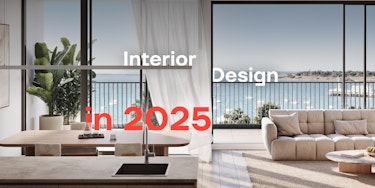In the ever-evolving world of interior design, 2025 promises a profound shift in how we approach our living and working spaces. Gone are the days of purely aesthetic-driven choices; the upcoming trends embody a deeper connection to individuality, sustainability, and functionality. As we prepare to embrace the new year, design enthusiasts and professionals alike are rethinking the core purpose of interiors — making them not just places to live but reflections of who we are and how we interact with the world.
This article dives into eight pivotal interior design trends that are set to define 2025, showcasing examples that inspire a fresh perspective on the art of space-making. From embracing natural elements to the rise of bold maximalism, these trends tell a story of resilience, creativity, and adaptability in modern interiors.
Nature as Nurturer: Biophilic Design in Full Bloom
The concept of biophilia — our inherent connection to nature — continues to grow stronger in interior design. In 2025, biophilic design takes a bold leap, moving beyond mere houseplants to fully integrated natural environments within homes. Think indoor waterfalls, green walls that double as air purifiers, and furniture crafted from reclaimed wood and stone.
Biophilic design isn’t just about aesthetics; it’s rooted in science. Studies have shown that proximity to nature reduces stress, improves concentration, and enhances overall well-being. A home office with a wall-mounted garden of ferns and succulents, for instance, becomes more than just a workspace — it transforms into a haven of productivity and peace.
Moreover, architectural innovations are aligning with this trend. Skylights and oversized windows are increasingly popular, flooding interiors with natural light and offering uninterrupted views of the outdoors. Architects and designers are blurring the boundaries between inside and out, creating a seamless flow that invites nature into daily life.
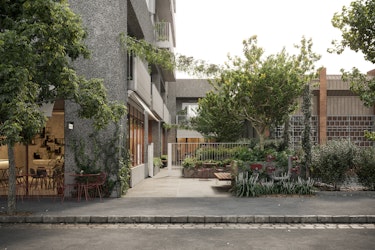
Maximalism Reimagined: The Art of Organized Chaos
Minimalism has met its match. Maximalism in 2025 isn't about clutter; it’s about curating a space that celebrates layers of color, texture, and personal artifacts. Interiors now tell stories, weaving together different eras, cultures, and artistic influences.
Where minimalism focused on "less is more," maximalism challenges this narrative by emphasizing "more is meaningful." A living room adorned with gallery walls of mismatched frames, vintage collectibles, and statement furniture becomes an intimate portrait of its owner.
This trend also resonates with sustainability. Instead of discarding and replacing, maximalists breathe new life into old items. Upcycling is gaining traction—turning an heirloom trunk into a coffee table or repurposing antique fabrics for modern upholstery. The result? Interiors that feel rich, dynamic, and profoundly personal.
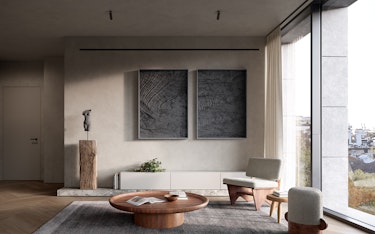
Earth Tones and Rich Textures
While bright whites and cool greys dominated past decades, 2025 sees a return to earthy palettes. Warm terracottas, deep ochres, and forest greens evoke a grounding connection to the planet, while textured materials like boucle, jute, and velvet add depth.
This shift is a response to our collective yearning for warmth and comfort amidst a chaotic world. Earth tones evoke a sense of stability, while natural textures invite a tactile experience that’s been missing in hyper-digital lives.
Imagine a bedroom with clay-plastered walls, a rust-hued duvet, and a handcrafted rattan headboard. Such spaces feel cocoon-like, encouraging relaxation and introspection. Designers are also pairing these tones with layered lighting to amplify coziness, such as using dimmable sconces alongside sculptural floor lamps.
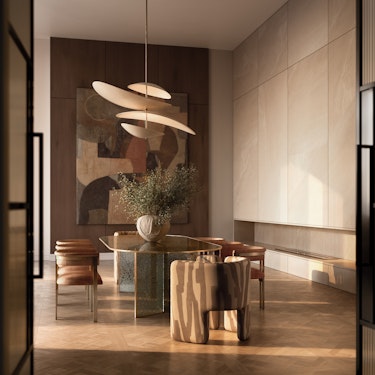
Statement Lighting as Sculptural Art
Lighting in 2025 transcends its functional role to become a central design element. Sculptural chandeliers, bespoke pendant lights, and modular LED installations blur the line between illumination and art.
Lighting designers are pushing boundaries with unconventional materials — think hand-blown glass, woven metal, or even bio-based elements like algae. These pieces don’t just brighten a room; they transform it, casting intricate shadows and creating dynamic focal points.
A prime illustration is a dining area with a kinetic light fixture that mimics the movement of waves. Such innovations not only enhance aesthetics but also foster an emotional connection to the space. It’s a reminder that light, in all its forms, shapes how we perceive and experience our surroundings.
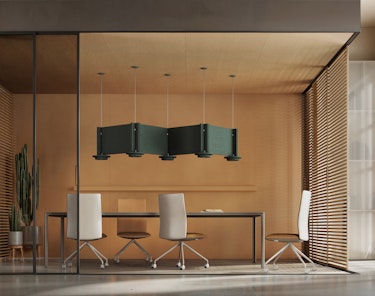
Multifunctional Spaces for Modern Lifestyles
As the lines between work, leisure, and family life blur, interior spaces are adapting to do more. 2025 emphasizes multifunctionality, with furniture and layouts designed to cater to a range of needs seamlessly.
Compact apartments, in particular, benefit from this trend. Murphy beds that fold into walls, coffee tables that double as storage units, and modular seating arrangements allow for maximum functionality in minimal square footage.
Designers are also integrating smart technology to enhance flexibility. For instance, a room divider equipped with soundproof panels and a built-in projector can transform a shared living space into a private theater. These innovations cater to the diverse demands of modern life, offering convenience without compromising style.
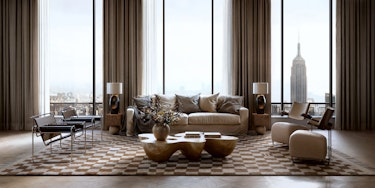
Sustainable Luxury: Eco-Conscious Glamour
Sustainability no longer implies compromise. Instead, 2025 introduces eco-conscious luxury—designs that are both opulent and mindful. From ethically sourced marble to artisan-crafted furnishings using recycled materials, this trend proves that luxury and responsibility can coexist.
In high-end design, sustainability often manifests as a focus on durability and timelessness. Custom-built furniture made from locally sourced hardwood, for example, becomes a lifelong investment rather than a disposable commodity.
Artisanal craftsmanship also plays a significant role. Pieces like handwoven rugs, ceramic vases, or sculptural lighting fixtures not only add character but also support local economies and traditional techniques. This approach redefines what it means to live lavishly yet responsibly.
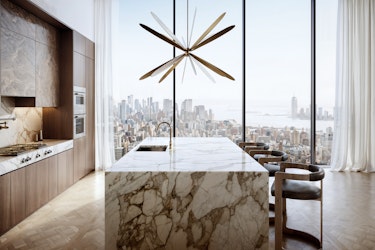
As we stand on the cusp of 2025, these interior design trends highlight a collective desire for spaces that are meaningful, functional, and sustainable. Each trend reflects a broader narrative about our values as individuals and communities — from reconnecting with nature to embracing the transformative power of technology.
